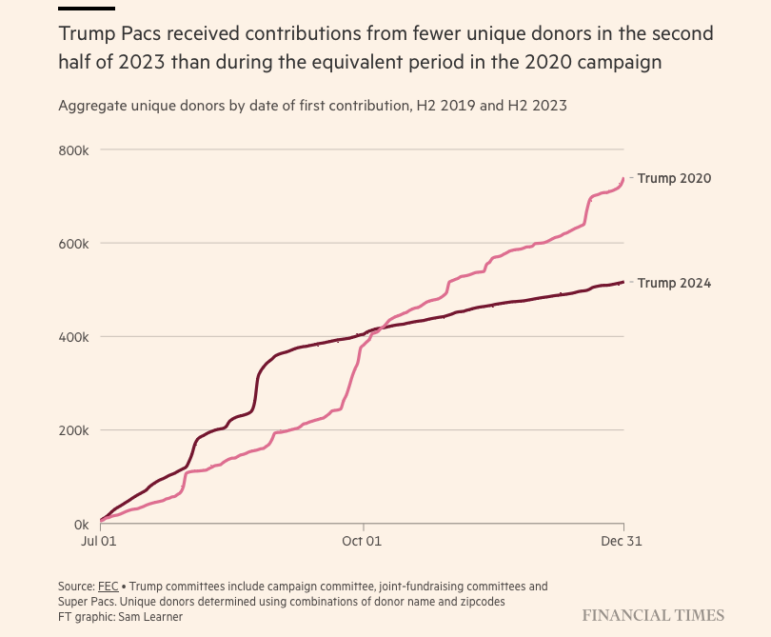

10 Steps for Small Newsrooms to Start Digging into Data Journalism
Read this article in
© Pexels/Lukas – CC0The media industry has been disrupted. Falling advertising revenues make many publishers anxiously eye their balance sheets. Small outlets are particularly struggling. As a consequence, many of them are hesitant to invest in data journalism, fearing that it would lead to additional costs.
In the UK — usually seen as a vanguard when it comes to data journalism — local news outlets struggle to keep up.
Colin Porlezza, a senior research and teaching associate at the Institute of Mass Communication and Media Research at the University of Zurich, writes that “Even the British media system, where data journalism is generally well embedded into the news cycle, suffers from a central-regional divide due to scarce human and economic resources in smaller news outlets.”
The Importance of Data Journalism for Small Outlets
Yet, now more than ever before, data journalism is important for smaller newsrooms and outlets.
According to Kira Schacht, a German data journalist, “telling a story with data often provides a way of conveying a bigger picture, while illustrating local implications by highlighting a localized aspect of a dataset.” Schacht, who is also the co-founder of the German data journalism start-up Journocode, is convinced that data-driven reporting helps smaller outlets stand out and provides a unique experience to their audience. “Finally,” Schacht argues, “data-driven methods can also help aid the watchdog role of journalism, which is especially needed in local journalism.”
But if data journalism is so important to small newsrooms and local outlets, how can we make sure that they, too, can participate? In order to find out, I interviewed leading industry experts, data journalists and heads of data teams in Germany, Austria and the United Kingdom. Some worked for small outlets or nonprofit investigative bureaus, others for major newspapers.
Main Findings
- Data journalism is teamwork. Simon Rogers, who started The Guardian’s Datablog and is now Data Editor at Google, described his data journalism “dream team” as a group of six to seven people – a number that is consistent across all the outlets I interviewed. Notably, the size of the newsroom does not make a difference to the size of the data team. The teams are often a mix of data journalists, programmers and developers, many of them not arriving with a traditional journalism background. For instance, at Spiegel Online, a former city planner and a physicist are working on data journalism projects, while other outlets have hired people with a computer science background.
- Being small can be an advantage. “If you have got a leader who is committed to innovation, it should be easier to turn around a small newsroom,” says The Guardian’s former editor-in-chief Alan Rusbridger. In general, less in-house expertise is not necessarily a disadvantage. According to Megan Lucero, who leads The Bureau of Investigative Journalism’s Bureau Local, “It is much easier for smaller newsrooms to change and introduce new things — this is your new resource.” She says that smaller organizations can more easily pair up with academics and researchers, which can give them an edge in their reporting. Yet, finding common ground regarding different approaches and priorities as well as workflows and deadlines is essential.”
- Shake off the dust with data skills. The case study of the Berliner Morgenpost illustrates how data journalism can change the organizational culture of a local newspaper. Julius Tröger started doing data journalism from scratch. Within a few years, he and his growing team were able to do award-winning data journalism. The Berliner Morgenpost, suffering from its old-fashioned image in the past, currently boasts some of the best data journalism in the German-speaking world.
- Diversification. Data journalism can take many different forms and shapes. With data journalism, it is possible to tell a different story for everyone — a unique selling point of online journalism. Whether it is drawing the former GDR border or guessing how unemployment dropped during Barack Obama’s US presidency — users like to interact, and those exercises can be quite educational, too. Finally, there is also room for self-collected data stories and crowd-sourced journalism.
The crucial point, however, is which steps small newsrooms can take to improve their data journalism efforts and to form a data journalism team — all while taking care of their limited budget. My research has allowed me to come up with the following list.
Ten Steps to Get Started
- Set reasonable goals: A data visualization, a page with data, a graph or deep month-long data-driven research — all that’s data journalism. Yet, it is vital that the projects and expectations towards data journalism suit the outlet. Think about what your data team can achieve and what you want them to achieve and then set it up accordingly.
- Commitment from the top: “None of it stands a chance if you don’t have an editor-in-chief who believes in it,” says Rusbridger. He is not the only one to emphasize the importance of committed leadership. “The barriers are mainly about culture and leadership now, not about technology,” digital strategist Nic Newman confirms.
- Enthusiasm on the bottom: While a vision is certainly required, more often than not a bottom-up initiative and some preliminary results are the means to convince a skeptical editorial board.
- Communication is essential: In order to achieve lasting change in a newsroom, communication is essential. Rusbridger again: “The only way to create change was to constantly make people talk about it.”
- Build up skills: There are three ways of bringing the skills required for a data journalism team into a newsroom: 1) Train your staff, for example by offering workshops. 2) Bring in expertise by hiring data journalists, developers and/or programmers. 3) Collaborate with others newsrooms or experts such data scientists and analysts.
- Hire a few geeks.
- Give the team (and the geeks) room and resources.
- Cooperate: The data journalism community in Germany is rather small and very responsive. Even “coopetition” (the collaboration between competitors) is common practice.
- Start small and with a hypothesis.
- Don’t be afraid.
Unquestionably, this list is not the be-all and end-all. Nevertheless, it hopefully provides a useful starting point for smaller newsrooms and outlets who would like to get started in data journalism.
Of course, data journalism isn’t everything and, in many respects, journalists have always been working with data in some way or another. Even so, as the industry progresses, data journalism will be increasingly difficult to avoid.
“Not every journalist has to know how to scrape or to build something, but every newsroom needs to have an understanding of computer-based journalism,” says Lucero. You do need to know what is possible, and you need a basic understanding of statistics and Excel.”
Tröger of the Berliner Morgenpost agrees.
“Data journalism will become bigger,” he says. “Today, even the smallest newsrooms have somebody who works with data, and there is more to come. What we discuss internally is whether we need opulent visualizations or not. The Washington Post has 24 people working on interactive, data-driven projects, and they do great things, but maybe this is too much.”
It seems that, as with many things, the right balance is key.
The outlets interviewed for this study were Berliner Morgenpost, SZ.de, ZEIT ONLINE, Spiegel Online, Dossier, CORRECT!V and The Bureau of Investigative Journalism’s Bureau Local. The full report “Bigger is Not Always Better: What we can learn about data journalism from small newsrooms” is published by the Reuters Institute for the Study of Journalism and can be found here.
This post first appeared on the European Journalism Observatory website and is reproduced here with permission.
 Bettina Figl is a reporter and online editor for the daily national newspaper Wiener Zeitung in Vienna, Austria. She specializes in longform, features and digital journalism while covering stories about education, politics, social issues and feminism. She taught digital journalism at the University of Applied Sciences WKW in Vienna.
Bettina Figl is a reporter and online editor for the daily national newspaper Wiener Zeitung in Vienna, Austria. She specializes in longform, features and digital journalism while covering stories about education, politics, social issues and feminism. She taught digital journalism at the University of Applied Sciences WKW in Vienna.








